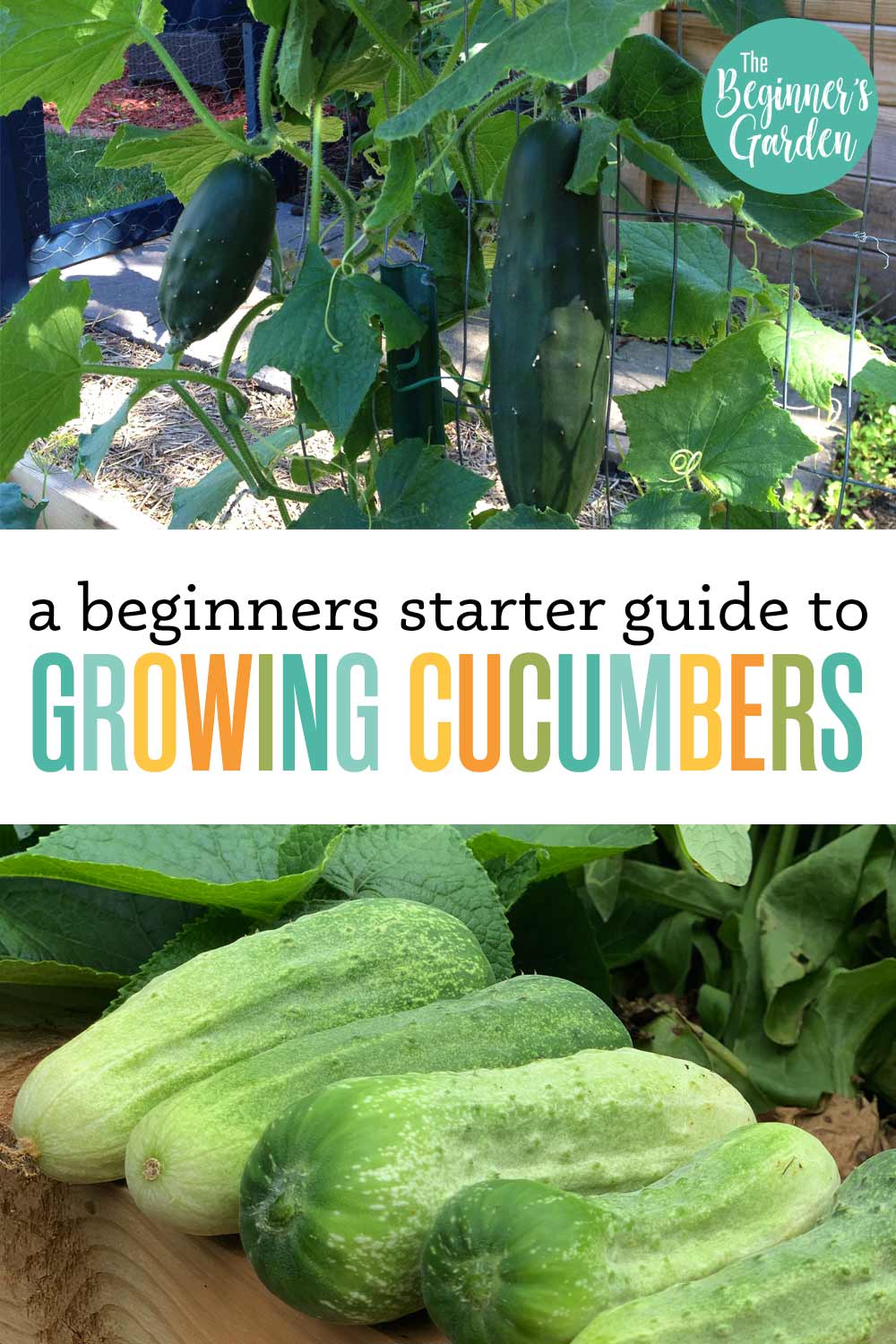How to Grow Cucumbers: Beginner’s Starter Guide
Wanting to grow a garden this summer? Most beginning gardeners want to grow cucumbers in their gardens. We slice them for our salads, maybe make pickles, or simply enjoy a refreshing summer snack.
Cucumbers are an easy-to-grow crop for a beginner as long as you know the basics on how to grow it and what problems you might encounter ahead of time. Here is a beginner’s starter guide to help you grow them successfully for a great harvest all summer long.
When is the best time to grow cucumbers?
Cucumbers are best grown in the late spring and summer after the danger of frost has passed. The plants and seeds do not like cool soil (under 65 degrees). The plants also do not like it when the night time temperatures are in the 40s so watch the weather in the spring to see when the night temperatures are in the 50s and the daytime temperatures are in the 70s or above.
When it’s time to plant, I prefer planting cucumbers directly from seed in your garden soil. Cucumbers do not like their roots disturbed and can be difficult to transplant if you don’t get the timing just perfect. Even if they do survive the transplant, often the transplant shock sets them back to the point where it would have been better to plant the seed in the garden.
BUT, the key is to wait until the soil temperature is high enough. Cucumber seeds won’t germinate in cool soil. Make sure the soil temperature at the depth the seed will be planted (about 1/2″) is at least 65F when you check it in the morning. Yes, I recommend taking your soil’s temperature. After many failures when sowing my cucumber seeds too early, I learned to rely more on soil temperature than planting date charts. Find my favorite soil thermometer to measure the temperature of your soil here in my Amazon storefront.
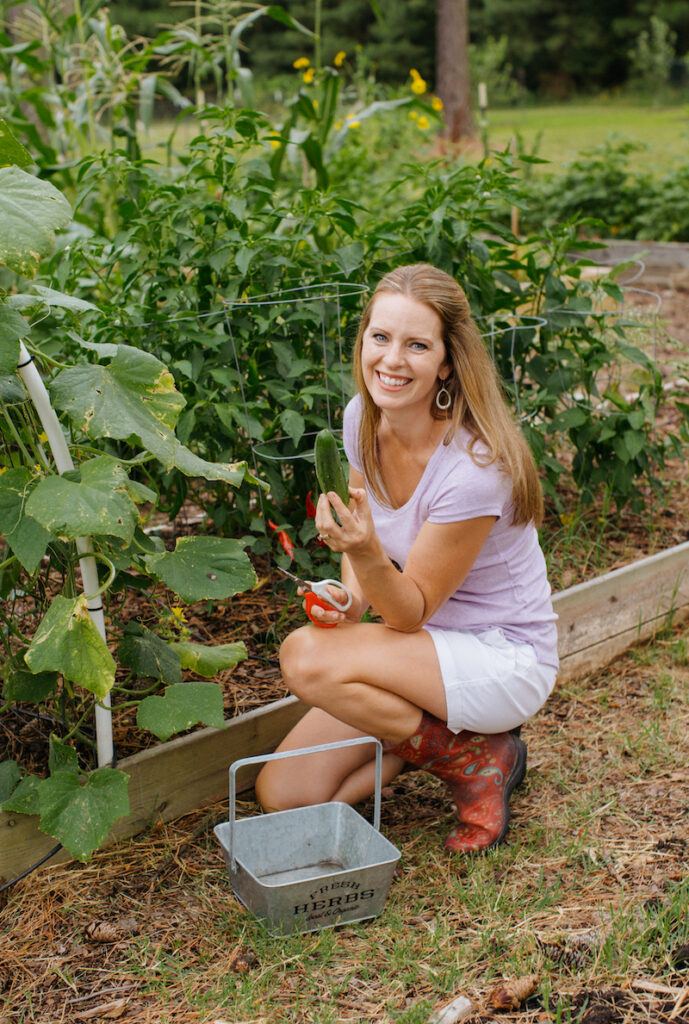
Where should I grow cucumbers?
Rich soil. Cucumbers grow best in well-draining soil that has lots of organic matter like compost. I don’t worry about adding extra fertilizer as long as I add a good helping of rich compost.
Full sun. As is the case for any plant that produces a fruit, cucumbers thrive in full sun. Select a spot in your garden that receives more than six hours per sunlight per day — though eight hours or more is preferable.
Consistent water. Cucumbers can be picky when it comes to how much water to give them. They like to be watered consistently, especially once the plant starts to flower and set fruit. When you see this happening, you will want to water them more than before. This usually happens around the same time as the summer heat sets in for most gardeners. If left too long without water, they can become stressed and won’t produce as much for you, if at all. This can also create bitter cucumbers that are inedible or at the very least, not enjoyable. So, make sure you plant cucumbers close to a convenient water source. (I prefer putting these Garden in Minutes Garden Grids — *affiliate link* — on a timer so my crops get plenty of water without my having to irrigate by hand — use code JILL10 for $10 off $100 or more.)
Trellis: Most cucumbers benefit from growing beside a trellis. This not only keeps the leaves and fruit off the ground — preventing leaf diseases and fruit rot — it also makes extra space in your garden for more crops. Most any vertical trellis works for cucumbers. (Here are a few trellis ideas.)
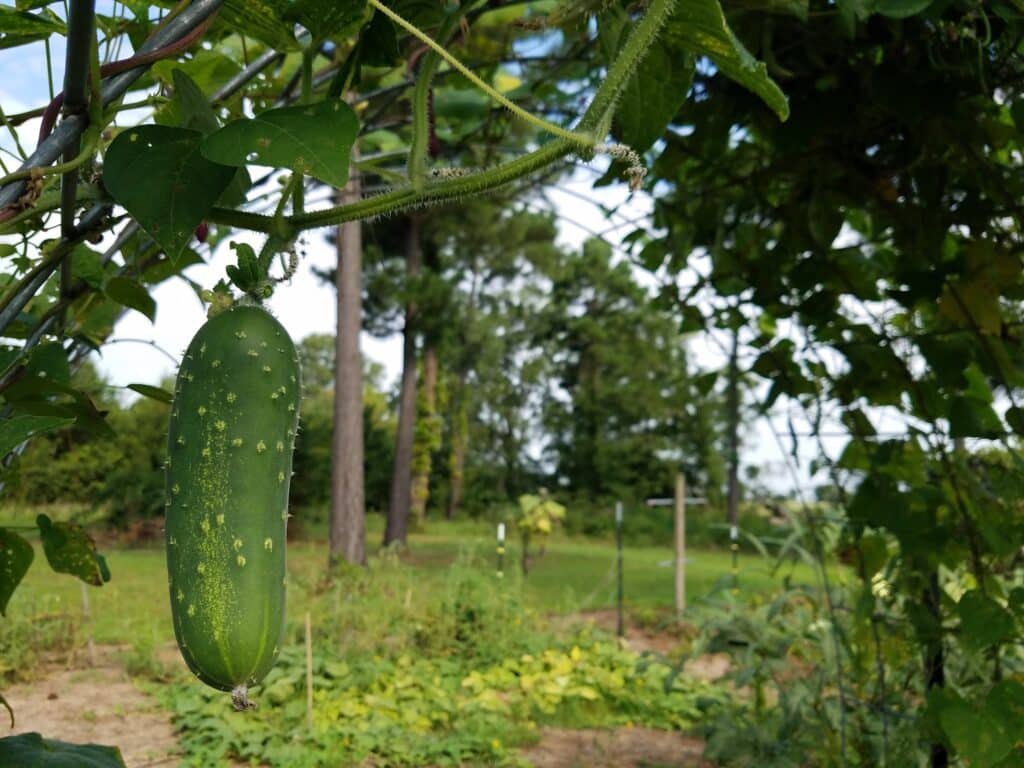
Planting Tips
- Plant 1-2 weeks after last frost date, when the soil temperature has warmed to at least 65F, click here to find your average last frost date for your location.
- For beginners, I would not recommend seed starting indoors for cucumbers. Direct seeding into the garden gives you the best chance for success since cucumbers do not like to have their roots disturbed.
- Mulch around the plants when they are around 6 inches tall to conserve water and help with weed prevention
- Cucumbers can be planted in ground beds, raised beds, or containers.
- If you are growing in containers, make sure to pick a bush variety and use a cage or trellis to help support the vines
- For a 5-7 gallon pot, only plant three seeds per container and thin to one plant since the plant will vine and take over. Planting too many seeds can lead to a lot of growth that one container cannot support.
- If planting in a raised bed or ground bed, plant one seed every 3 inches and thin to one plant every 6-9 inches with a trellis.
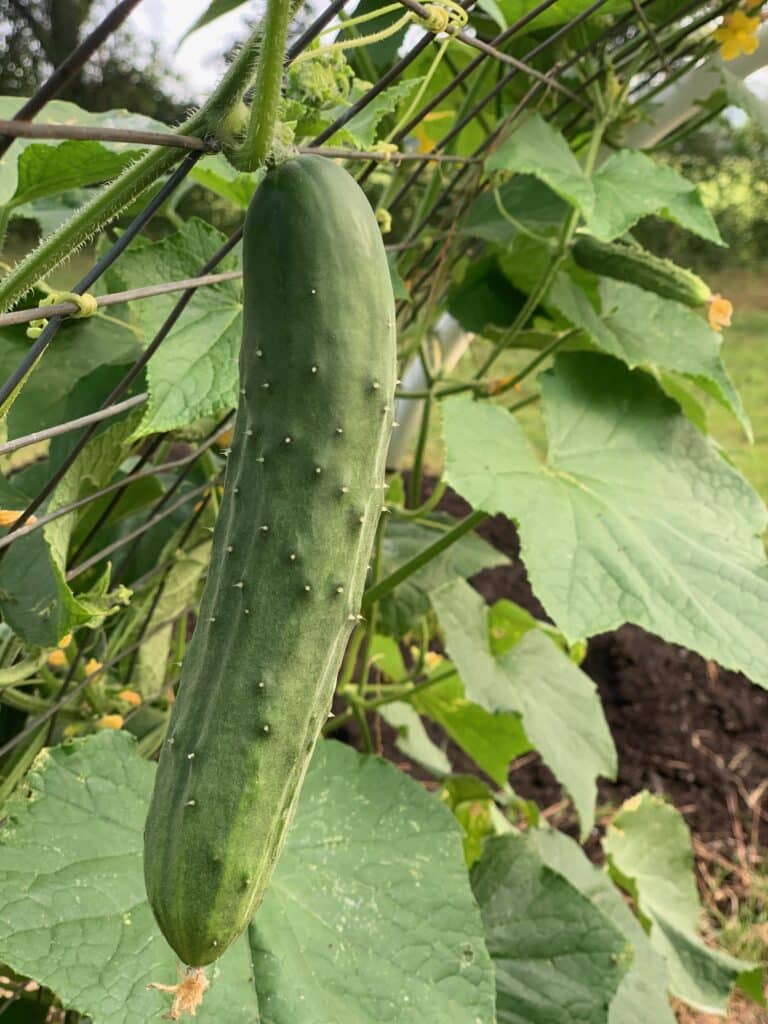
Pollination Problems
A common problem seen with growing cucumbers is seeing flowers but not getting fruit. This can be caused by several things. First, remember that the male flowers come first to attract pollinators before female flowers ever show up.
But, if you notice the female flowers but they aren’t growing, the problem can be a lack of pollination. Misshapen fruit can also be caused by incomplete pollination. This could be due to pollinators or due to weather stress causing the pollen not to transfer. If it’s the latter, keep the irrigation consistent and wait for the weather to break and pollination should resume.
If you believe the issue is a lack of pollinators, one way to increase pollination for cucumbers is to delay planting until a little later in the season — even a month after your last frost date will help. By doing this, pollinators will be more present when the cucumbers start setting fruit. You can even plant a second planting as late as July in most areas!
Of course, in the future, you can plant pollinator-attracting plants like nasturtium near your cucumbers. You can also opt for parthenocarpic varieties that don’t require cross-pollination. My favorite of these is Arkansas Little Leaf.
Pests and Diseases
While cucumbers don’t typically attract as many pests as other members of the cucurbit family like squash, the ones they attract can be devastating. The main pest that can be seen with cucumbers are the cucumber beetle and the pickleworm.
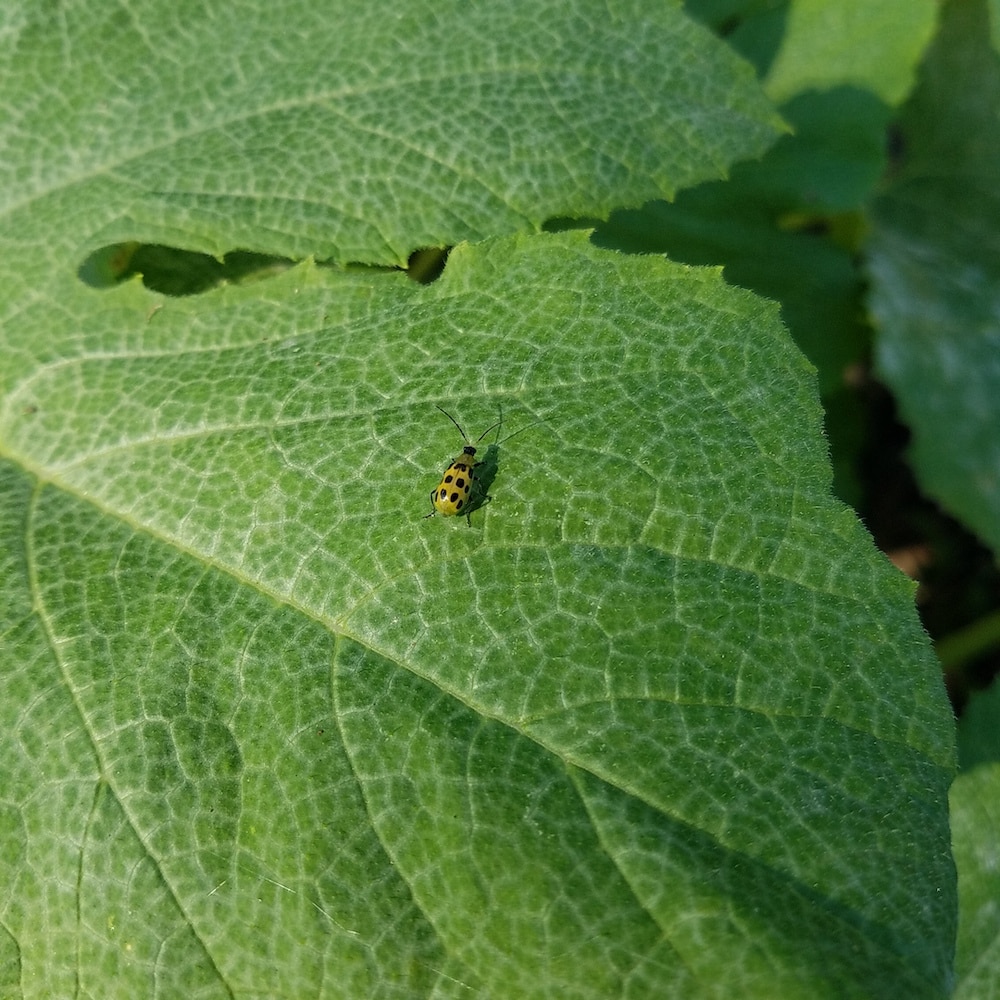
The cucumber beetle — besides damaging the plant — can cause bacterial wilt that will eventually kill off the plant. The pickleworm will eat the fruit before it is mature. Pickleworm is most common in southern areas, so it won’t affect everyone. If you know you have a problem with either of these pests, the best prevention is to use an insect netting to keep these insects off the plant especially before they start vining. If you keep the insect netting on after flowers appear, choosing a parthenocarpic variety of cucumbers (or one labeled as “greenhouse variety) is essential.
The main disease that cucumbers deal with is powdery mildew. While there are ways to combat this disease, I have found it best to plant hybrid varieties that are powdery mildew resistant. When you are looking in the seed catalogs or on seed packets, if that variety is resistant to powdery mildew, it will tell you in the description. This disease is more common in the fall when humidity is at its highest usually. Learn more about cucumber diseases and pests in episode 247 of The Beginner’s Garden Podcast: Cucumbers, What Can Go Wrong?
One thing to know and expect is that cucumber plants do loose vigor and production as they age. This is a natural part of their life cycle and should be taken into consideration when concerned about what could be going wrong with your plants. You can always re-plant in the middle of the summer as long as you still have time for the plant to fully mature before the first frost comes.
Harvesting Tips
- Check varieties for ideal size you are looking for; plants can come in very small to very long options.
- Make sure any cucumbers that you harvest still have their sheen to them. Once a cucumber’s skin becomes dull it is considered over ripe. The over ripe ones should still be picked so that the plant isn’t sending energy into that fruit and will develop new fruit.
- If you are wanting to save seed from a cucumber (make sure it’s not a hybrid), leave one over ripe fruit on the plant but pick the rest off.
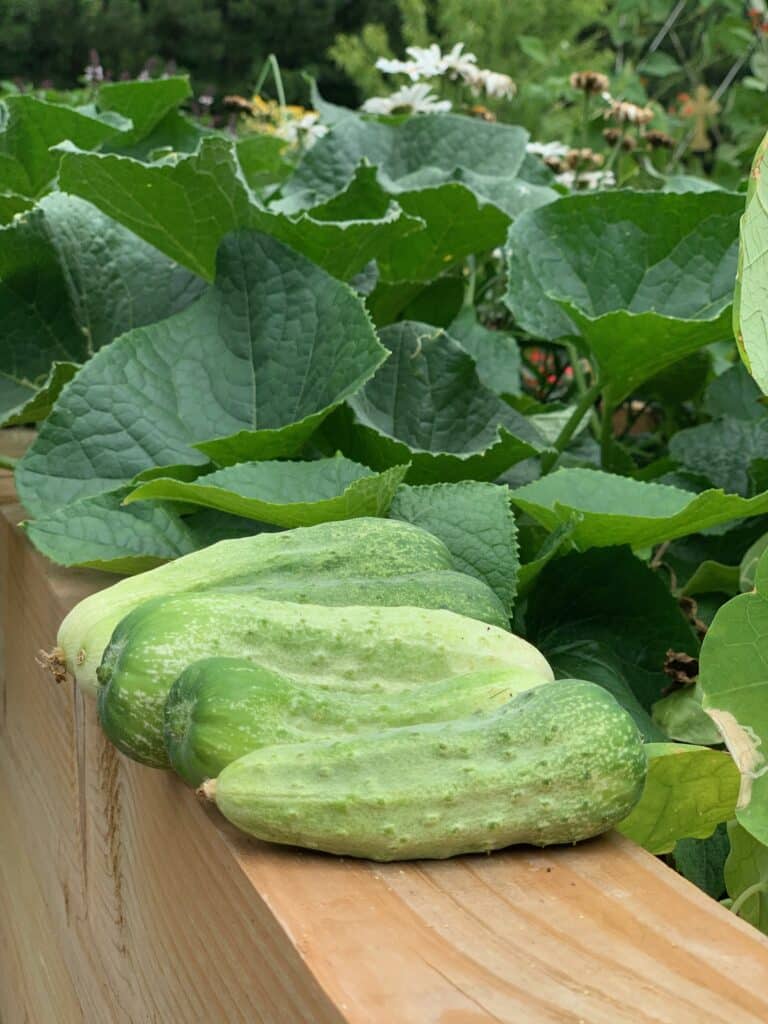
Varieties for Beginners
The most common varieties for beginners to try are Marketmore76 (good slicing option) and Boston Pickling (good for preserving and pickling). Both of these vine out to quite large plants so if you are wanting to grow them in containers, I would recommend Picklebush since it is a container friendly variety. You can always ask for local recommendations from your garden center or nursery to see what grows best in your area.
What has been your experience growing cucumbers? Do you have any tips you can add?
Do you get overwhelmed with garden planning?

Subscribe here for my best tips to plan your garden in just 7 days -- all for FREE.
Plus, I'll send you my "In the Garden E-mail" on Fridays, periodic updates on garden resources relevant to you, and you'll receive access to my entire bank of free garden downloads!
You are also agreeing to our privacy policy.

